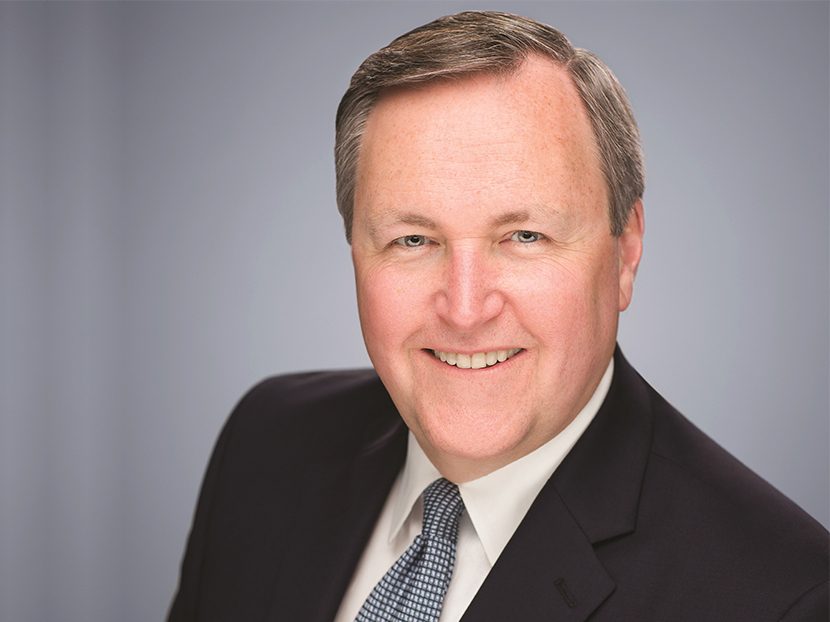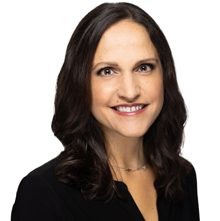A Conversation with PMI CEO Kerry Stackpole
The exec discusses the COVID-19 pandemic, supply chain disruption, rising materials costs, and inclusion and diversity in the organization.

The COVID-19 pandemic has affected industries across the board, transforming the way businesses operate while adapting to new requirements and precautions to keep their employees and customers safe. The plumbing manufacturing industry is no exception.
Plumbing Engineer Editor Amalia Deligiannis recently spoke with Kerry Stackpole, FASAE, CAE, CEO and executive director at Plumbing Manufacturers International. The association recently released its 2021 Annual Report focusing on how the pandemic has transformed plumbing manufacturing.
Plumbing Engineer: COVID-19 was a perfect example for members to get together for legislation. Would plumbing manufacturers have been able to overcome pandemic-related challenges without legislative interventions from PMI?
Kerry Stackpole: One of the great things about associations is we have the power of the masses in the sense that we have major companies who are members and who participate in and support our advocacy and our legislative initiatives. The association has the ability to create great examples for regulators and legislators from across the industry.
So, the short answer is no, I don’t think they would have had much success. It would have taken a lot more work on an individual company’s part, so the association really does serve that role as advocate and educator.
PE: One of the biggest issues on everyone’s mind is supply. How is PMI helping members navigate the disruption in the supply channel?
KS: There’s at least two channels of disruption to be sure. One we have been working on now, I think we are going on three years, is the question of trade and tariffs. We spent a lot of time with the United States Trade Representative (USTR) and the United States International Trade Commission trying to help them understand what the impact of trade tariffs are on the plumbing industry.
Unlike a lot of other industries, the parts and components that plumbing manufacturers purchase from other sources — whether it’s in China or in other countries — are precision-made products; they have to meet health and safety standards. And so we are helping the commission and the USTR understand that our members need time to ramp up.
If you want to onshore products, it could take four to five years, if not longer, because you have to build the capacity. Then you have to test the capacity and verify the quality is good and so on. So, we spent a lot of time with the USTR. I think that eventually, and we are not clear exactly when, we will develop some positive results in the Biden administration.
The other is working with members to try to identify alternate sources for some of the components that they want or need.
Then you have the strange things such as the freeze in Texas, which ultimately ended up closing down a couple of refineries for a period of time, resulting in certain types of plastic resins not being available. There’s not much you can do about that; it’s a weather circumstance. So, again, it’s helping our members understand what their alternatives might be.
PE: The COVID-19 pandemic placed a spotlight on touchless fixtures. It seems as if hands-free is everywhere now. How is PMI supporting manufacturers with growth in this area?
KS: A lot of our work was keeping members aware of where there was interest in hands-free fixtures and where there might be potential demand for the product, but it was really about helping them understand just how significant the pandemic was.
We created a COVID-19 resource center for our members so not only could they work on keeping their workplaces infection-free and clear, but also recognize what other things could be done that would help bring this pandemic to an end.
The whole idea of handwashing and wearing masks and all those kinds of things were significant. I think our members were looking at that as a resource not only for their companies but also in a trend fashion to look ahead and see what might be coming down the road.
One of the other things we did in this process is hosted webinars. For example, we did a great program with the Copper Development Association talking about the microbacterial benefits of copper — helping our members understand where there might be opportunities from a product or material standpoint.
PE: Will manufacturing companies continue remote work or will there be a shift back to the office full time once the pandemic has passed?
KS: We are going to see a new combination of that because some companies discovered that having people work remotely is actually pretty productive. You’re going to see a mix, at least on the administrative, sales and office sides of the business. On the factory side, you’ve got to have people in the plant working, but that’s different criteria there.
PE: What do you see on the horizon that will help us through the supply chain interruption?
KS: In some ways it’s not at all clear what it’s going take. We’re talking about major disruptions in the availability of containers, the availability of ships, the availability of trucks to move freight. A lot of things are happening at the moment that are making it very difficult to operate a smooth supply chain.
We hope that, over a period of time, the supply chain and the shipping criteria will begin to smooth out a bit. But it’s anybody’s guess as to how long it’s going to take and how significant that will be.
Many of our members are now looking at their supply chains and stepping back to rethink just-in-time inventories. It was a big manufacturing move — a pretty successful and cost-effective move — when the supply chains were operated smoothly.
They’re also looking at alternate sources. A lot of work is going on behind the scenes to sort this out, but a lot of it has to do with the logistics of moving inventory. So, it’s not just a manufacturer’s problem right now; in some ways, it’s a global logistical problem.
PE: How are manufacturers dealing with the rise in costs for products for materials to develop their products?
KS: Businesses operate on a fundamental principle: they will absorb some costs but, in other cases, they will eventually have to pass them to the consumer. Many of the 25 percent tariffs passed during the previous administration eventually were rolled into the price of product. There wasn’t a choice. That’s a massive amount of cost to absorb.
Manufacturers are trying to source where they can more effectively but also recognizing that, at some point, those extra costs may need to be rolled into the cost of the product. It becomes a question of how much room is there in the marketplace to be able to do that but at some levels, you get to the point where you don’t have much of a choice.
PE: What has PMI done to promote inclusion and diversity?
KS: We have been working with our board of directors to develop a specific plan and that development is underway currently. We started with understanding who is in our membership from a demographic standpoint so that we could make sure we knew how to target our audience in general. The board has specifically tasked staff with helping produce a more specific plan to integrate greater diversity and inclusion not only in our committees but in our board of directors as well.
A big piece in our annual report focuses on the work that UL has been doing that mirrors pretty reflectively on all our major members. If you look at a Kohler, Moen, Viega, Lixil — they all have very active diversity equity and inclusion initiatives. Our goal is to sync up with them so that we are all pulling the rope in the same way.
PE: Is there anything else you’d like to add?
KS: One of the great things about our industry is that in the midst of a pandemic, in the midst of a lot of chaos in this country and globally, PMI members stepped up in terms of altruism in some sense. They started producing PPE equipment that they distributed to their local communities, they continued to produce products that would help limit the risks of the pandemic, whether it was faucets or handwashing stations or eye-washing stations — whatever it was that was needed.
To me, that was really one of the most impressive things of this past year — how serious our industry took the problems at hand and worked to support the nation’s recovery. That’s a significant strategic view.





